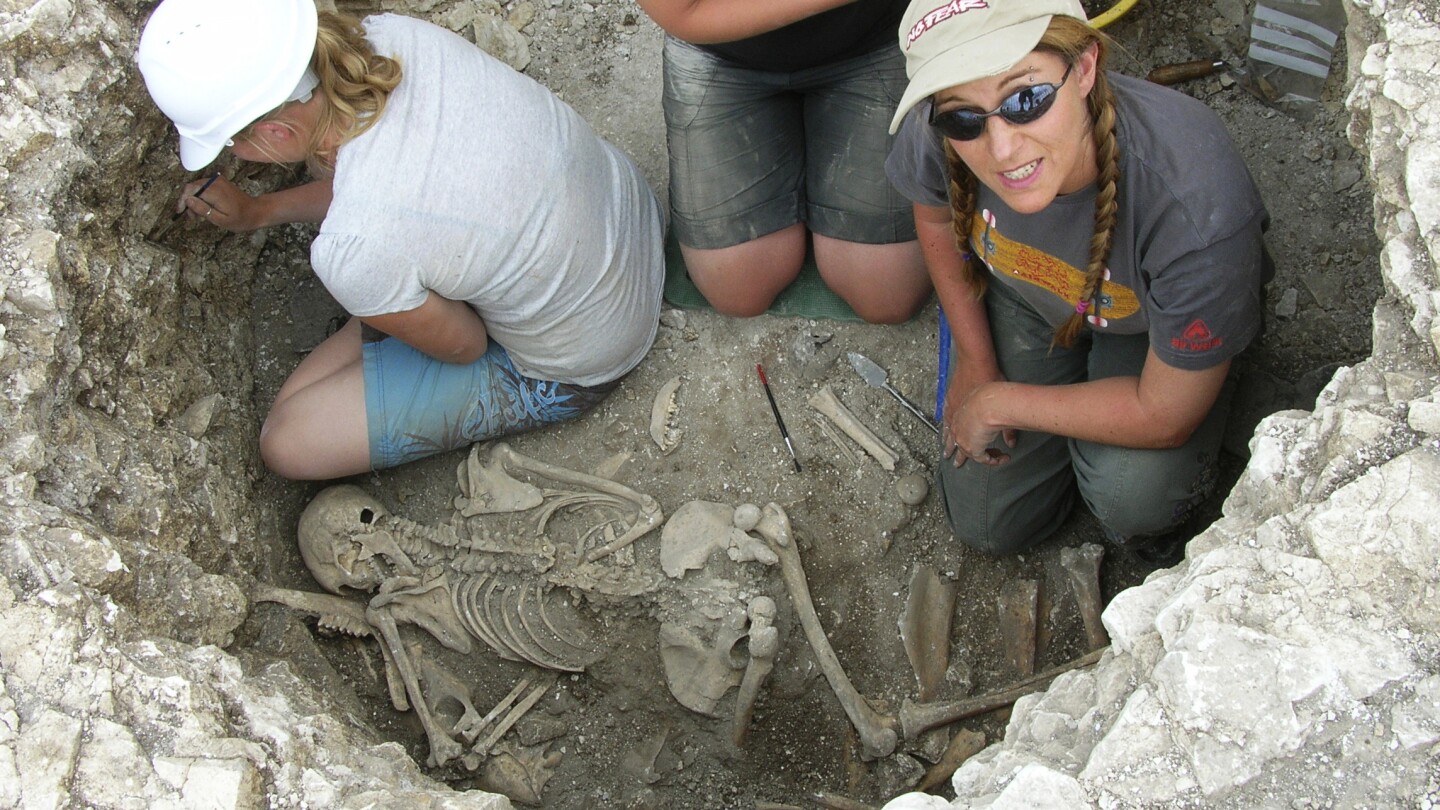Science
Ancient DNA suggests women were at the heart of social networks in Celtic society in Britain

Unveiling the Power of Female Networks in Celtic Britain
In the misty landscapes of pre-Roman Britain, a fascinating story of female influence is emerging. A recent genetic study of a Dorset cemetery reveals that women were the pillars of Celtic society, maintaining strong family ties while men often came from outside, likely through marriage. This matrilocality is a rare historical phenomenon, challenging traditional views of gender roles in ancient times.
Genetic Insights into a Female-Centric Society
The discovery, published in Nature, highlights that women stayed within their social circles, managing land and property. Men, in contrast, were often newcomers, dependent on their wives’ families for livelihood. This pattern, known as matrilocality, is uncommon and suggests a society where women’s roles were crucial, though not necessarily in formal political power.
Challenging Historical Norms
Historically, women often moved to their husbands’ families, as seen in studies from the Neolithic to the early Medieval periods. However, in Celtic Britain, the opposite was true. This unique social structure underscores the significant role of women in maintaining social and economic stability, a finding that reshapes our understanding of prehistoric gender dynamics.
Celtic Women: Symbols of Independence and Power
Roman writers like Julius Caesar noted the independence and prowess of Celtic women, often buried with valuable items. This archaeological evidence, coupled with genetic insights, paints a picture of a society where women enjoyed relative autonomy and respect, contrasting sharply with the patriarchal norms of the time.
Egalitarian Society Beyond Rome’s Shadow
While Celtic Britain wasn’t a matriarchy, women’s control over land and strong social support suggest a more egalitarian society compared to Rome. This challenges the notion that ancient societies were universally patriarchal, offering a nuanced view of gender roles and social structures.
Redefining Prehistory: A New Narrative
These findings invite us to reconsider our assumptions about prehistoric societies. The story of Celtic Britain’s female-centric networks is not just a historical footnote but a testament to the diversity of human social structures. It reminds us that history is full of surprises, waiting to be uncovered by fresh eyes and new technologies.
-

 Money3 days ago
Money3 days agoConsumer Financial Protection Bureau Adds Error Message To Home Page
-

 Australia1 day ago
Australia1 day agoTropical Cyclone Zelia intensifies to category 2 storm
-

 Money2 days ago
Money2 days agoWinning Content Strategies For Wealth Managers
-

 Asia1 day ago
Asia1 day agoWhat you need to know about 2024 YR4, the asteroid that could hit Earth in about eight years’ time
-

 Entertainment16 hours ago
Entertainment16 hours agoPrince Harry and Meghan Markle’s Best Moments and Photos From the 2025 Invictus Games
-

 Australia11 hours ago
Australia11 hours agoTropical Cyclone Zelia intensifies to category five system off Pilbara coast
-

 Politics1 day ago
Politics1 day agoDozens of religious groups sue to stop Trump admin from arresting migrants in places of worship
-

 Entertainment3 days ago
Entertainment3 days agoEvery Celebrity Who Attended the 2025 Super Bowl: A Guide to the A-Listers at the Big Game










